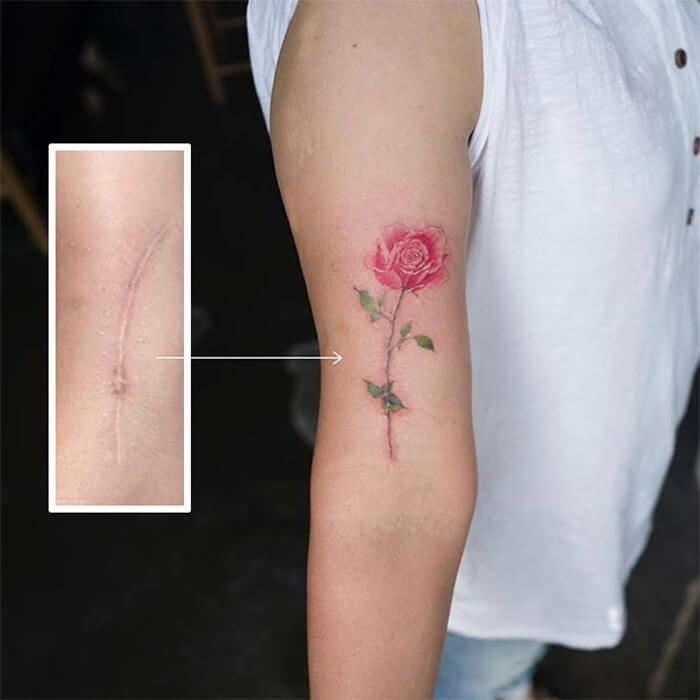Transforming Scars into Art: The Power of Scar Cover Up Tattoos
Scars, often permanent reminders of past injuries or surgeries, can carry emotional weight. While some wear their scars as badges of honor, others may feel self-conscious or wish to minimize their appearance. For those seeking a transformative solution, scar cover-up tattoos offer a unique and empowering option. This article delves into the world of scar camouflage, exploring the artistry, techniques, and emotional healing it can provide.
Tattooing over scars is a specialized field, requiring artists with a deep understanding of skin anatomy, ink behavior on scarred tissue, and artistic sensitivity. Unlike traditional tattooing on smooth skin, working with scars demands adaptability and precision. Artists specializing in this area often spend years honing their craft, learning to work with various scar types, textures, and pigmentation irregularities.
The history of scar concealment through tattooing dates back centuries. Ancient cultures utilized pigments derived from natural sources to camouflage scars, often incorporating these markings into rituals or as symbols of strength and resilience. In modern times, advancements in tattoo inks, equipment, and techniques have significantly elevated the artistry and sophistication of scar cover-up tattoos.
The decision to get a scar cover-up tattoo is deeply personal. Individuals may choose this path for a myriad of reasons, including boosting self-esteem, reclaiming their bodies, or finding artistic expression within their scars. Scar camouflage can be particularly empowering for those who have experienced trauma, burns, or surgeries that have left visible reminders on their skin. By transforming these marks into works of art, individuals can redefine their relationship with their bodies and embrace a renewed sense of confidence.
However, it's crucial to approach scar cover-up tattoos with realistic expectations. While skilled artists can achieve remarkable results, complete invisibility of the scar is not always guaranteed. The success of a cover-up depends on various factors, including the scar's age, size, texture, and the surrounding skin's health. Additionally, the healing process for tattoos over scars may differ from traditional tattoos, potentially requiring more touch-ups or special aftercare.
Advantages and Disadvantages of Scar Cover-Up Tattoos
| Advantages | Disadvantages |
|---|---|
| Increased self-confidence and body positivity | Scars may affect tattoo ink differently, potentially impacting the final result |
| Transforming a source of insecurity into art | Healing time may be longer compared to traditional tattoos |
| Personalized designs that hold personal meaning | Multiple sessions or touch-ups might be necessary |
If you're considering a scar cover-up tattoo, thorough research and consultation with experienced artists specializing in this field are essential. By understanding the process, limitations, and potential outcomes, you can make an informed decision that empowers you on your journey of healing and self-expression.
Deconstructing skip hire costs your guide to local pricing
Hogwarts no thanks exploring harry potter hates hogwarts fanfiction
Unleash your inner canvas the allure of wicked lotus tattoo shop














